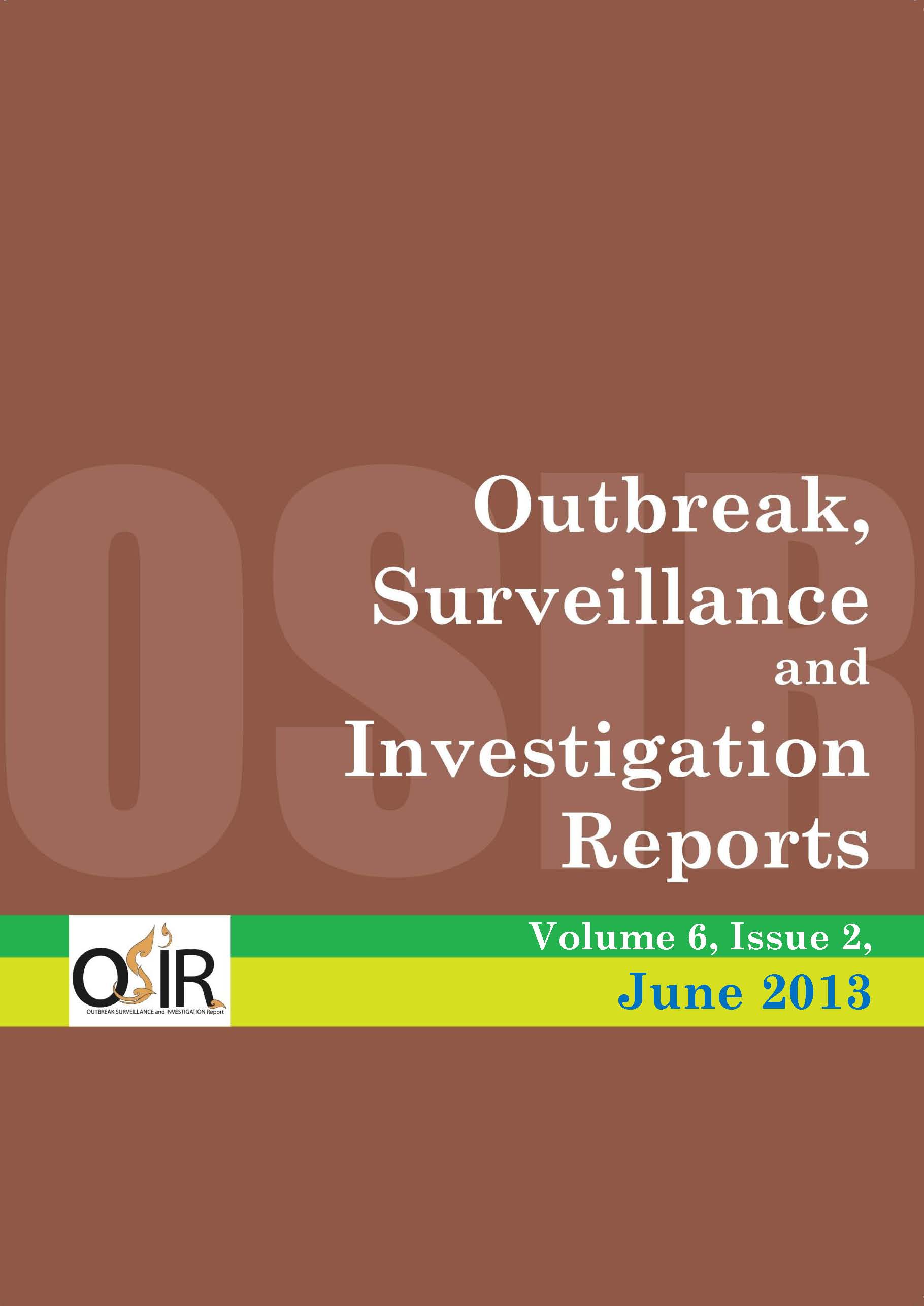Evaluation of Dengue Surveillance System in Vientiane Capital City, Lao People
DOI:
https://doi.org/10.59096/osir.v6i2.263330Keywords:
dengue, surveillance system, Vientiane Capital City, Lao People’s Democratic RepublicAbstract
In July 2010, we evaluated the dengue surveillance system in Vientiane Capital City (VCC) to provide recommendations for improvement of the system. We interviewed 29 stakeholders from the Department of Health, and one central and two district hospitals in VCC. Sensitivity and predictive value positive (PVP) were calculated using dengue data from June to July 2009 and June 2010. In addition, timeliness of reporting and data quality in June to July 2009 were also evaluated. The surveillance system was simple and paper-based, with both passive and active components. There were no designated surveillance officers in the central hospital. In 2010, the Department of Health provided training and frequency of data collection was increased. Overall sensitivity increased from 50% in June-July 2009 to 68% in June 2010. However, sensitivity decreased in the central hospital where higher number of patients was found. PVP was 100% in June-July 2009 and 96% in June 2010. Sixty percent and 32% of patients were reported within one week after diagnosis in the central and district hospitals respectively. Proportion of accurate data was more than 90% for case classification, gender and age. Sensitivity of surveillance improved with training and active surveillance. However, active surveillance only increased sensitivity when the caseload was not high. To improve the system, there should be designated trained surveillance staff in central hospitals and date of onset for each patient should be collected.
References
World Health Organization and the Special Programme for Research and Training in Tropical Diseases (TDR). Dengue guideline for diagnosis, treatment, prevention and control: new edition. France: World Health Organization, 2009. [cited 2013 Mar 13]. <http://whqlibdoc.who.int/publications/2009/9789241547871_eng.pdf>
Hayes EB, Gubler DJ. Dengue and dengue hemorrhagic fever. Pediatr Infect Dis J. 1992 Apr;11(4):311-7.
Meltzer MI, Rigau-Pérez JG, Clark GG, Reiter P, Gubler DJ. Using disability-adjusted life years to assess the economic impact of dengue in Puerto Rico: 1984-1994. Am J Trop Med Hyg. 1998 Aug;59(2):265-71.
Anderson KB, Chunsuttiwat S, Nisalak A, Mammen MP, Libraty DH, Rothman AL, et al. Burden of symptomatic dengue infection in children at primary school in Thailand: a prospective study. Lancet. 2007 Apr 28;369(9571):1452-9.
Suaya JA, Shepard DS, Siqueira JB, Martelli CT, Lum LC, Tan LH, et al. Cost of dengue cases in eight countries in the Americas and Asia: a prospective study. Am J Trop Med Hyg. 2009 May;80(5):846-55.
Beatty ME, Letson GW, Margolis HS. Estimating the global burden of dengue. Proceedings of the Second International Conference of Dengue and Dengue Haemorrhagic Fever; 2008 Oct 15-17; Phuket, Thailand.
Lao Statistics Bureau. Area and average midyear population by provinces in 2005-2011. [cited 2013 Mar 13]. <http://www.nsc.gov.la/index.php?option=com_content&view=article&id=37:population&catid=6&Itemid=38>
German RR, Lee LM, Horan JM, Milstein RL, Pertowski CA, Waller MN; Guidelines Working Group Centers for Disease Control and Prevention (CDC). Updated guidelines for evaluating public health surveillance systems: recommendations from the Guidelines Working Group. MMWR Recomm Rep. 2001 Jul 27;50(RR-13):1-35.
Centers for Disease Control and Prevention. Epi Info. [cited 2013 Feb 5]. <http://wwwn.cdc.gov/epiinfo/html/prevVersion.htm>
Vatthanasak A, Iamsirithaworn S, Srimongkol Y, Sonthichai C, Jongcherdchootrakul K, Gronsang D, et al. Field study of dengue surveillance in Sa Kaeo Province on Thai-Cambodian Border, 7-16 July 2008. Proceedings of the 58th Annual EIS Conference; 2009 Apr 20-24; Atlanta,USA.
Chairulfatah A, Setiabudi D, Agoes R, van Sprundel M, Colebunders R. Hospital based clinical surveillance for dengue haemorrhagic fever in Bandung, Indonesia 1994-1995. Acta Trop. 2001 Oct 22;80(2):111-5.
Vogt RL, LaRue D, Klaucke DN, Jillson DA. Comparison of an active and passive surveillance system of primary care providers for hepatitis, measles, rubella, and salmonellosis in Vermont. Am J Public Health. 1983 Jul;73(7):795-7.
Schiøler K. Dengue transmission and surveillance in a small-island setting: a case study from Grenada Karin Schiøler [dissertation]. Denmark: St George’s University. 2006.
Gill J, Stark LM, Clark GG. Dengue surveillance in Florida, 1997-98. Emerg Infect Dis. 2000 Jan-Feb;6(1):30-5.
Hafkin B, Kaplan JE, Reed C, Elliott LB, Fontaine R, Sather GE, et al. Reintroduction of dengue fever into the continental United States. I. Dengue surveillance in Texas, 1980. Am J Trop Med Hyg. 1982 Nov;31(6):1222-8.
Van Beneden CA, Olsen SJ, Skoff TH, Lynfield R. Active, population-based surveillance for infectious diseases. In: M'ikanatha NM, Lynfield R, Van Beneden CA, de Valk H, editors. Infectious disease surveillance. Massachusetts: Wiley-Blackwell; 2007. p. 32-43. [cited 2013 Mar 13]. <http://goo.gl/xRujg>
Lao PDR. Ministry of Health. World Health Organization. Human cases and larval surveillance: Standard Operating Procedures (SOP) for dengue outbreak. 2009; 3-5.
Beatty ME, Stone A, Fitzsimons DW, Hanna JN, Lam SK, Vong S, et al; Asia-Pacific and Americas Dengue Prevention Boards Surveillance Working Group. Best practices in dengue surveillance: a report from the Asia-Pacific and Americas Dengue Prevention Boards. PLoS Negl Trop Dis. 2010 Nov 16;4(11):e890.
Downloads
Published
How to Cite
Issue
Section
License
Copyright (c) 2023 Outbreak, Surveillance, Investigation & Response (OSIR) Journal

This work is licensed under a Creative Commons Attribution-NonCommercial-NoDerivatives 4.0 International License.









